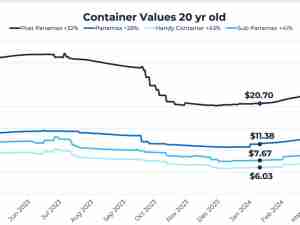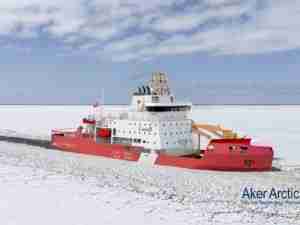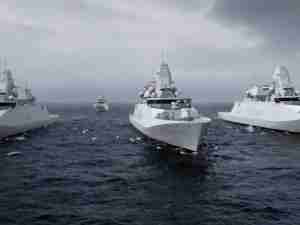CMA CGM & FESCO Baltic feeder service to St. Petersburg
posted by AJOT | Sep 28 2008 at 08:00 PM | Maritime
CMA CGM and FESCO have established a new, large volume, Baltic Sea feeder service between Hamburg and the second-largest city in Russia ’ St. Petersburg. In the weekly service, two 1A ice-class ships are in use, the Emotion with a capacity of 1,440 teu as well as the 1,730 teu, newly built CMA CGM Volga(alias FESCO Vitim). The CMA CGM Volga, built by Polish shipbuilders Stocznia Szczecinska, is 184.70 meters long, 25.30 meters wide and has 250 connections for reefer containers (Reefer). Hence, the CMA CGM Volga is currently the largest containership that regularly calls at the Port of St. Petersburg. With a load-bearing capacity of 22,500 t, the ship reaches a maximum draught of 9.90 m and has a service speed of 19.7 knots. Besides the Eurogate CTH container terminal and the HHLA Container Terminal Burchardkai in the Port of Hamburg, the ports in Antwerp and Zeebr’gge will also be serviced.
St. Petersburg is the largest Russian port on the Baltic Sea. In the past five years, container traffic between Hamburg and St. Petersburg increased fourfold. Container traffic achieved growth of 22% in 2007 and reached a volume of 730,000 teu.
On the average, there are 30 weekly departures in the direction of Russian Baltic Sea ports starting in Hamburg from 14 different feeder companies. The high departure density makes it possible for export loads to also be transported via Hamburg to Russia several times a day. The Elbe port continues to expand its position as the leading transit hub for Russia in sea-based foreign trade. Among the most important trade partners of the Port of Hamburg, Russia has now taken third place.
CMA CGM, based in Marseille, is one of the three largest container shipping companies in the world and has a workforce of approx. 12,000. With a fleet of 390 container ships, CMA CGM operates in all navigable regions of the world with 150 services. In 2007, the transport volume amounted to 7.7 million teu.
The Far Eastern Shipping Company (FESCO), based in Wladivostock, is the largest shipping company in Eastern Russia. FESCO has a fleet of almost 100 freight ships including 28 container ships and has a workforce of 4000. FESCO transports mainly coal, metals, fertilizers, construction wood, cars, fish, seafood as well as other goods and runs an overseas network of agents. Currently, FESCO is renewing its fleet and expanding its share of the national and international freight market.









